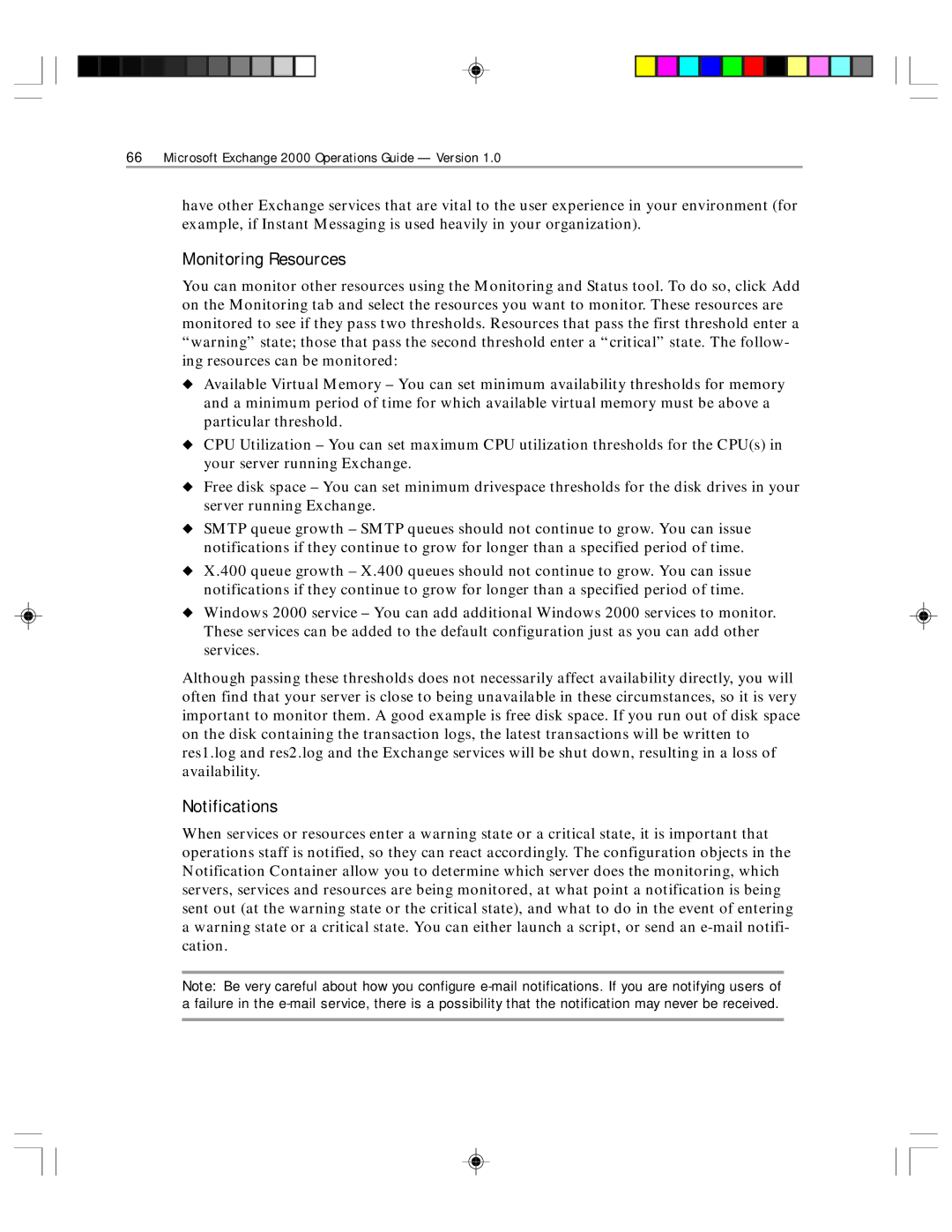
66Microsoft Exchange 2000 Operations Guide — Version 1.0
have other Exchange services that are vital to the user experience in your environment (for example, if Instant Messaging is used heavily in your organization).
Monitoring Resources
You can monitor other resources using the Monitoring and Status tool. To do so, click Add on the Monitoring tab and select the resources you want to monitor. These resources are monitored to see if they pass two thresholds. Resources that pass the first threshold enter a “warning” state; those that pass the second threshold enter a “critical” state. The follow- ing resources can be monitored:
◆Available Virtual Memory – You can set minimum availability thresholds for memory and a minimum period of time for which available virtual memory must be above a particular threshold.
◆CPU Utilization – You can set maximum CPU utilization thresholds for the CPU(s) in your server running Exchange.
◆Free disk space – You can set minimum drivespace thresholds for the disk drives in your server running Exchange.
◆SMTP queue growth – SMTP queues should not continue to grow. You can issue notifications if they continue to grow for longer than a specified period of time.
◆X.400 queue growth – X.400 queues should not continue to grow. You can issue notifications if they continue to grow for longer than a specified period of time.
◆Windows 2000 service – You can add additional Windows 2000 services to monitor. These services can be added to the default configuration just as you can add other services.
Although passing these thresholds does not necessarily affect availability directly, you will often find that your server is close to being unavailable in these circumstances, so it is very important to monitor them. A good example is free disk space. If you run out of disk space on the disk containing the transaction logs, the latest transactions will be written to res1.log and res2.log and the Exchange services will be shut down, resulting in a loss of availability.
Notifications
When services or resources enter a warning state or a critical state, it is important that operations staff is notified, so they can react accordingly. The configuration objects in the Notification Container allow you to determine which server does the monitoring, which servers, services and resources are being monitored, at what point a notification is being sent out (at the warning state or the critical state), and what to do in the event of entering a warning state or a critical state. You can either launch a script, or send an
Note: Be very careful about how you configure
